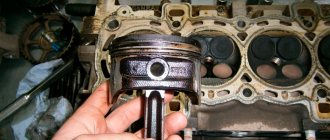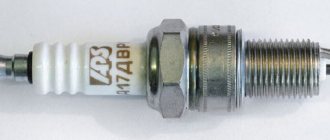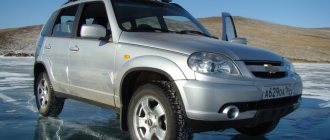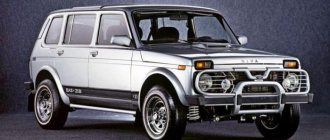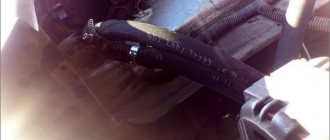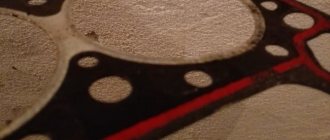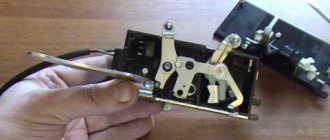The Russian automobile industry does not particularly please consumers with the quality of its products. However, when it comes to buying an inexpensive car that can overcome any obstacles and off-road conditions, the Lada is one of the first options that our car enthusiasts pay attention to. In this situation, they most often prefer two models - Niva and Niva Chevrolet. Everyone tries to compare their options to choose the best SUV option at an affordable price. Today we will also compare these two models so that you have as few questions as possible.
Why are they compared?
Each of the models is based on almost the same filling. At one time, Chevrolet was conceived as the second generation of Niva. But the plant did not have the money to develop some elements, so only the body was among the new items in the new model. The whole base was practically the same, with only a few minor modifications.
Conclusion
These two SUVs have a lot of other advantages and disadvantages, I tried to highlight the main ones. Write in the comments what else is different about these cars. From all of the above, we can draw the following conclusion: If you need a car primarily for asphalt with relatively rare off-road forays, then the Chevrolet Niva will be preferable. If you need to go off-road more often, then a regular Niva is better suited. In addition, it is cheaper when it comes to used cars. The difference in the cost of the new Lada 4×4 and Chevrolet Niva is not so significant.
Motors
Each of the cars has a 1.7-liter 4-cylinder engine under the hood that runs on gasoline. The pedigree of this engine dates back to “ancient times”, when the VAZ-2101 engine just appeared on the market. Each of the units has distributed injection and falls under EURO-5 environmental standards. The last major engine upgrades were carried out 11 years ago. Then a small “restoration” of the engines of each model took place. The changes concerned the valve levers and the timing belt tensioner.
At first glance, it seems that the engine is simply identical, because they have an interchangeable block, head, piston group, and crankshaft. But to be more precise, the VAZ-2123 engine, which is in the Chevrolet, is considered more modern and modernized.
The 23rd has a significantly different oil pan; the engine mounts are located in different places. The fact is that the front suspension gearbox on a Chevrolet is not mounted to the engine, like in a 4x4, but is separated from it. The generator is located on the top of the engine, the power steering pump goes to the bottom. All this became possible because Chevrolet’s spare tire is not located under the hood, but “moved” to the rear door. At the same time, the motor power differs slightly. According to the passport, “Shnivy” has 80 horsepower, and the “ancestor” has 3 “horses” more.
Pros and cons of the regular Niva compared to the Chevy Niva
Let us highlight the characteristic features relating to both the 21st Niva and subsequent models VAZ-21213 and VAZ-21214. We will not consider the Long Niva (VAZ-2131), pickup truck (VAZ-2329) and other modifications. So, let's start with the undeniable advantages of the regular Niva compared to the Shevik:
- Patency . Due to the short wheelbase, the 21st model has better geometric cross-country ability.
- Price . In the same condition, a regular Niva will be 1.5-2 times cheaper than a Shevik.
- Availability and low cost of spare parts. Especially for body parts.
- "Psychological passability" . An ordinary Niva is not so scary to be scratched or slightly dented, unlike a Chevrolet.
- The best predisposition for off-road tuning .
Now let's list the disadvantages of the 21st Niva compared to the Chevrolet Niva:
- Low level of comfort . Noise, vibration, lack of power steering (on old Nivas), uncomfortable driving position.
- Outdated design . Although this is a controversial point, because the design of an ordinary Niva is recognizable all over the world, which cannot be said about the Shniva.
- Poor aerodynamics.
- Poor handling on the highway.
- Cramped interior. This includes an uncomfortable seating position in the back row and a small trunk.
Everything is clear with the advantages and disadvantages of the regular Niva compared to the Shevik. Let's move on to the Chevrolet Niva.
Transmission
Structurally, they are very similar, since the drive is made using the same components and parts. But there are still small nuances that distinguish the transmissions of each model. The Shniva has 3 transfer case mounting supports, while the earlier model only had two. The driveshafts, both rear and front, are the same for the cars. But the intermediate shaft, which connects the gearbox and the gearbox, is slightly elongated in the Chevrolet Niva.
Well, the main difference between the transmissions is that the Chevrolet has 2 control levers, while the 4x4 has three. In Chevrolet, the range control lever and the differential lock lever are combined into one unit - a single-lever design. Niva's control scheme has not changed since the first VAZ-2121 appeared, i.e. since 1977.
What you need for replacement work: keys, components, consumables
To carry out work on replacing shock absorbers, you need to purchase original struts or high-quality analogues, prepare a set of keys, a jack and wheel chocks. This part comes with all the necessary components, including washers and gaskets. The main thing is not to lose small parts during unpacking and installation work.
Attention! To make it easy to unscrew the nuts, it is recommended to treat all threaded connections with penetrating lubricant before removing the racks.
Modernization
Each of the cars was modernized, a steering wheel, windows and doors appeared. But seriously, improvements were most often aimed at reducing noise in the cabin and reducing vibrations while driving. That is, we can say that manufacturers tried to increase the level of comfort. Although, frankly speaking, comfort and the Russian auto industry are most often antonyms. But this is all lyrics, let's get back to our cars. Since Chevrolet is a younger car, it was ahead of its progenitor in many nuances.
For example, the mounting points for the rear axle in Chevrolet were immediately optimized when compared with the original. If we talk about the regular Niva, then this optimization appeared on the Lada 4x4 relatively recently - only after it was tested on the Shniva and received laudatory reviews from consumers.
Also, CV joints in cardan shafts on the Niva have been installed since 2010, but they began to be installed on 4x4s only 3 years later. Until 2013, it used “old school” hinges.
In addition, other suspension elements were redesigned, a stronger clutch, a vibration damper and much more appeared, which can be listed for a very long time.
The most interesting thing is that during this time the way of painting the car has changed. Over the years, our brave automakers have switched from anaphoresis to cataphoresis. Anticorrosive treatment has also been improved. The interior and exterior of the car have improved slightly: the radiator grille has shone with new colors, the mirrors have become larger than before, and the door upholstery has changed. But air conditioning on the Lada 4x4 appeared only in the middle of this decade - in 2014. Chevrolet began installing it 8 years earlier. Moreover, the central lock, which is used on the Shniva, is not present on the Lada to this day.
It is also worth mentioning that in addition to the refreshed appearance, the number and strength of vibrations has decreased. However, both one and the other model still need to continue to be modernized.
Which is better - Niva 4x4 or Chevrolet NIVA? Old vs new
spacers, internal CV joint boots on tuning suspensions modified for this type of lift and make adjustments. spring bumpers.
On the back:
The lift is carried out by installing new rear spring cups, which are bolted on top of the standard ones, and brackets for moving the rear shock absorber mounting points upward by 5 cm (bolted).
The short upper rods of the rear axle are lengthened or made adjustable (for easy rotation of the shank so that the crosspiece does not bite), the reaction rods of the rear axle are either reinforced with an angle or installed double, at the request of the client, a rear axle stabilizer "Tehnomaster" (Togliatti) is added, but it is necessary adjust to the elevator machine, digest.
The panhard rod or transverse rod is made split with an adjusting coupling (it is better to set it up on the bench of the roller, because when lifting the rear axle not only moves forward, but also moves to the side).
If necessary, a longer brake hose is installed, the brakes are bled, the rear spool is adjusted and the spring bumpers are adjusted. It is also desirable, on lifted cars, to use a rear CV joint.
For those who will lift old or damaged cars, you must constantly remember about the internal CV joints (the balls move out of their place), you must be prepared to replace them. This problem can be solved by reducing the drive angle by untying the front axle.
Outer CV joints are little susceptible to this; it will be worse for them if the wheel has an increased offset, width and weight, then they too can “crunch”. Although then the hub bearing will have a hard time, especially if it had play before. But we got away from this problem because... we install steering knuckles with two ball bearings (from the rear axle shaft), they do not need to be adjusted, they are tightened all the way, but it is better with a torque wrench. The unit turns out to be maintenance-free, the hub is unloaded, rolling is easier and the dynamics of the car are better. The steering knuckles are of course made in Russia and come with a guarantee.
When installing wide wheels after a lift, you must also remember about ball wheels (if they are weak, they will “fly”), the pendulum may also fly, and the installation of new gas shock absorbers entails strengthening the upper bracket of the front shock absorber (otherwise it will tear, especially if the front end is heavier), you can strengthen the mounting of the rear shock absorbers. It is advisable to change the suspension to p/urethane instead of rubber when lifting.
And here's what happened in the end:
Related articles:
Technical characteristics (Chevrolet-NIVA trunk pockets) The pockets are designed for installation in the niches of the luggage compartment of a Chevrolet-NIVA car…
Video watched: 2742723 Category: German cars Description: Good afternoon reader, do-it-yourself car repair is a collection of all kinds of instructions (articles,…
The all-wheel drive serial compact SUV Chevrolet Niva, assembled on the basis of the Russian Niva, is one of…
The AVTOVAZ company has modernized the front suspension of the LADA 4×4. Advantages of the modernized suspension of the LADA 4×41. The presence of a negative run-in shoulder...
Body and safety
Early 4x4 models had only 3 doors, but the Chevrolet was immediately conceived as a five-door. The second car remained in this form, if you do not take into account some experimental models that never became production. But the 4x4 had several body variations. For example, over the years the length changed, single and double cabins were produced...
If we talk about safety, then initially everything was very sad. In 2002, both models were tested, and using a method that completely copied EuroNCAP, the Shniva received only 1.6, and the Niva 0 points. It was sad; no one expected such a failure. But time passed, the cars improved, and new models were able to get 12.5 points each (thanks to airbags, ABS and belts).
Test results
Expert assessments were given based on a number of criteria.
Ergonomics. Vesta provides good planting geometry. XRAY is worse, despite adjusting the steering wheel for reach and a new seat. Niva is about the same level, but unless you are above average height (the range of seat adjustments is limited). But visibility is better (huge mirrors, powerful headlights). Vesta is let down by wide pillars, and XRAY is let down by small mirrors.
Dynamics. Vesta accelerates and turns more pleasantly than anyone else. The Niva is slow, but its connection to the gas pedal is much clearer than that of the more dynamic XRAY, which is uncomfortable to drive. Equal scores with the Niva for handling are associated only with the lack of a stabilization system on the Niva - the chassis itself is better tuned.
Ride comfort. Despite the additional sound insulation of the Cross version, XRAY turned out to be noisier than Vesta due to the disgusting sound of the engine. Niva in the “civilian” version without a snorkel does not frighten with unnecessary noise at all permitted speeds and is noticeably superior to Crosses in terms of smoothness.
Comfort in the cabin. Vesta is longer than the others and, as expected, wins over everyone in terms of rear space and trunk volume. And the compartment is well thought out. The Xray and Niva are all more modest, and the Chevrolet transformation is from the last century: to recline the backs of the rear seats, you first need to raise the pillows.
Do you agree with these assessments?
Also interesting: Top five crossovers of 2014
Let us remind you that we previously talked about how the Lada Vesta Cross and Lada XRAY Cross withstood the Karakum route (9000 km).
Maintenance
In this aspect, “Shniva” is significantly ahead of its “ancestor”. As numerous tests have shown, Chevrolet's first problems appeared only after 15 thousand kilometers, but the owner of a regular Niva will look into the service after 9 thousand kilometers. If we talk about prices for parts, they are almost identical.
Differences
It seems that the list of general points is quite small, but here we touch on what is most important for SUV cars. What are the differences between these cars:
- Safety . The Russian field had a much lower level of security than its American counterpart. This can be explained by the fact that when creating the Niva version, foreign developers tried to introduce their own quality standards. Ours relied only on our own standards.
- Niva has two gear shift levers, while Lada has three.
- The Niva's interior looks more beautiful. Experienced designers worked on the interior of the car. The Lada's interior is more functional.
- The price for the Niva car itself and its further maintenance is significantly higher than the price for the Lada car and maintenance.
- From the very beginning, the Niva has five doors. Lada was originally a three-door car, then the number of doors increased to five.
- The Niva's trunk is smaller, but the interior is more spacious. At Lada the situation is exactly the opposite.
